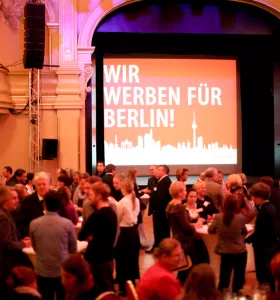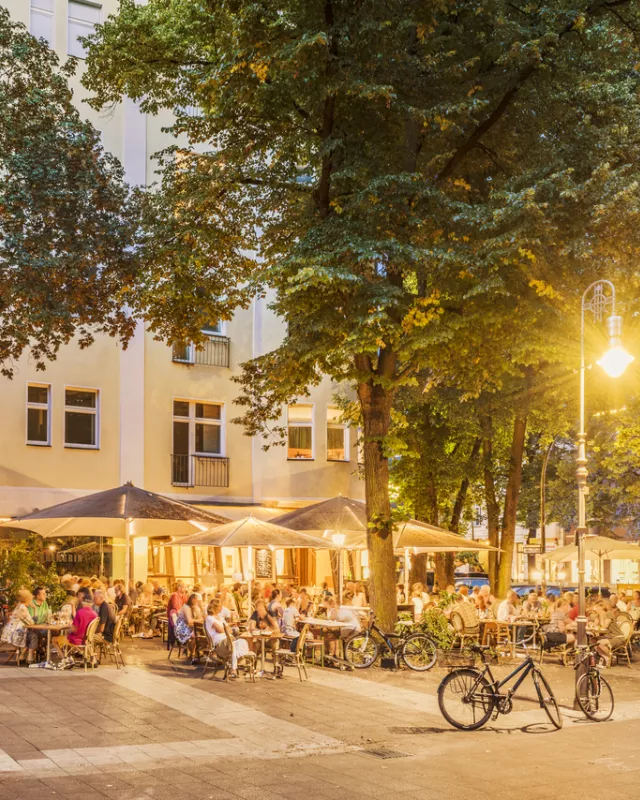An economic factor for Berlin – the tourism and convention industry
Study "Tourism Satellite Account" (TSA) by DIW Econ - Key figures 2023
- 15.1 billion euros in tourism consumption, 8.4 billion euros in gross value added by the visitor economy
- 224,800 people live from tourism in Berlin
- Every German hotel guest spends an average of 197,50 euros per day
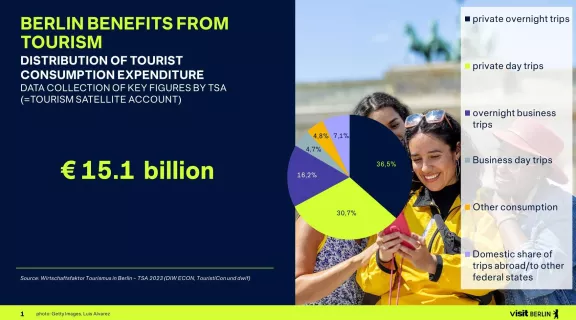
Berlin benefits
The tourism and convention industry is one of the most important economic and employment drivers in the German capital. According to the current study "Tourism Satellite Account Berlin 2023" (TSA) by DIW Econ, a subsidiary of the German Institute for Economic Research (DIW), Berlin's visitors spent a total of 15.1 billion euros in 2023 - a figure that almost corresponds to the successful tourism year 2019*.
The resulting direct gross value added was 8.4 billion euros - or 3.2 per cent of Berlin's gross domestic product. If indirect effects along the value chains are added, the visitor economy contributed a total of 4.6 per cent to Berlin's overall economic output.
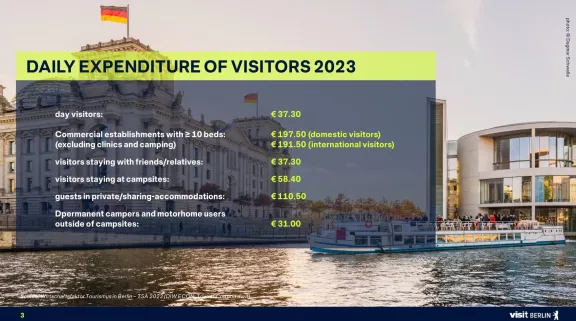
Berlin tourism as a job engine
Numerous sectors and the capital's labour market benefit from tourism: a total of 224,800 Berliners were employed in tourism-related sectors in 2023 - that corresponds to 10.3 percent of all people in employment. The strongest employment segments include accommodation, the MICE industry and the cultural and creative industries.
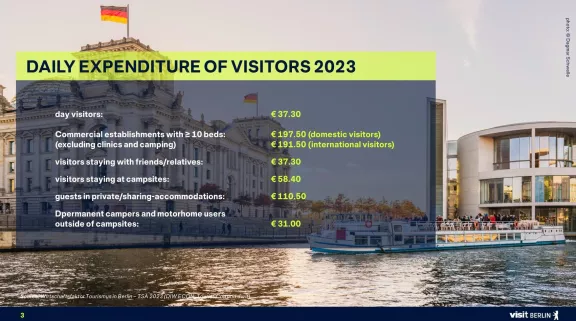
What Berlin visitors spend their money on
Whether shopping, hotel accommodation, restaurant visits or museum tickets - Berlin's guests bring spending power with them: In 2023, overnight guests from Germany spent an average of 197,50 euros per day and international guests 191,50 euros. The following overview shows what the money was spent on:
- Shopping - 21.5 per cent
- Restaurants & bars - 20.2 per cent
- Accommodation - 17.3 per cent
- Sport, culture, leisure - 9.1 per cent
- Public transport - 7.9 per cent
Around half of consumption comes from guests from the federal states. The TSA study also fully covers tourism by relatives, acquaintances and day trippers, providing a comprehensive picture of demand.
Business tourism makes a significant contribution to value creation
With a turnover of 1.1 billion euros, the congress and conference market accounts for 7.6 per cent of total tourism consumption. A congress participant spends an average of 349.56 euros per day. This makes the MICE industry an important driver of value creation, knowledge transfer and innovation in Berlin. (The expenditure values are a calculation of the economic effects of meetings and congresses in Berlin, based on the Meeting- & Event-Barometer Berlin 2023/24 published in September 2024).
Comparison with other sectors in Berlin
With 3.2 per cent direct gross value added, the tourism sector outperforms financial services (3.16%) and is only just behind the construction industry (4.8%). In terms of direct employment, the tourism industry is one of the city's highest-employing economic sectors at 8.5 per cent - on a par with the motor vehicle trade (10.4 per cent), public administration (8.0 per cent) and education (7.8 per cent).
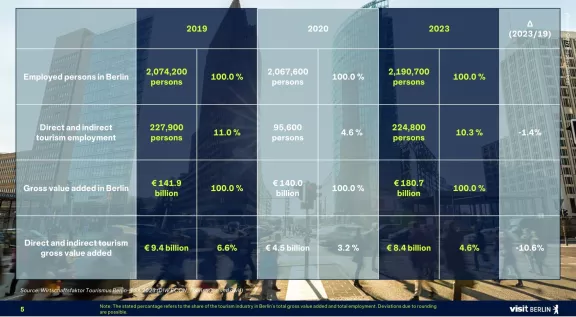
Methodological note The TSA analysis is an internationally recognised survey that enables comparability with other cities, countries and sectors and maps the complete demand mix of overnight, day, family/friend and business tourism. Comparisons with pre-TSA studies are therefore only possible to a limited extent. The next update (data year 2024) will be published in 2026. Details can be found in the full report.
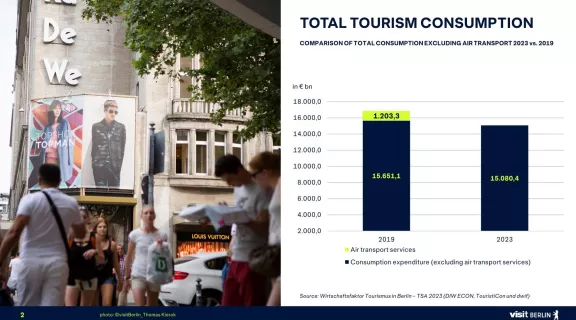
* Note on comparison with 2019: The comparative value refers to tourism consumption excluding aviation services (2019: 15.6 billion euros, 2023: 15.1 billion euros), as BER Airport is located outside the city limits. Previous calculations still included the turnover of the inner-city airports Tegel and Schönefeld. These were closed in November 2020 (Tegel) and February 2021 (Schönefeld).

